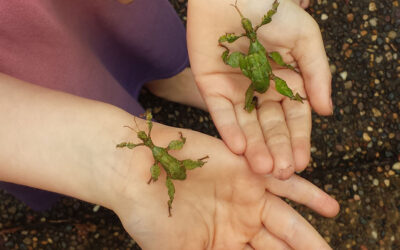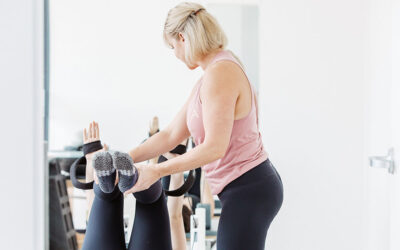As part of Dental Health Week, do your bit for your mouth and the planet with these 10 easy oral health tips for kids from the Australian Dental Association – they’ll set you on the road for a sustainable oral health routine for life.
1. Get your brush right
Toothbrush technology has come a long way in recent years. You can now buy toothbrushes with handles made from sustainably-grown, biodegradable bamboo. So when the bristles reach the end of their life, typically at around three months, you simply remove them – check out what the manufacturer recommends as the best way to do this. Then put the bamboo handle into your green waste along with your grass cuttings.
A new product on sale in supermarkets is a toothbrush where the head with the bristles can be removed from the handle with a simple click, and replaced with a new head – the same as what’s done when changing the head of an electric toothbrush. It’s said by the makers to reduce by 60% the plastic from discarded complete brushes destined for landfill, over a two-year period.
2. Tube blues
Typically made from layers of plastic laminate and aluminium, toothpaste tubes have long-presented a recycling headache for makers and consumers. However, one oral care product maker has developed a recyclable toothpaste tube made from High Density Polyethylene, the same plastic used to make plastic milk bottles. This recyclable tube, due to hit Australian supermarket shelves some time this year, can be put in the same recycling bin as your glass and plastics. The developers of this recyclable tube are also sharing the technology with other toothpaste manufacturers, which is good news for the oral care industry and the environment.
You may also have heard of toothpaste tablets and while these may seem like a good idea due to the lack of packaging as they’re typically sold in jars, most don’t contain the decay-busting ingredient fluoride; there’s also a lack of scientific evidence so far to demonstrate how effective toothpaste tablets are in terms of oral care, the ADA believes.
3. Less is more
Adolescents and adults only need a pea-sized amount of toothpaste on their brush, and for small children it’s just a smear – no more is needed to provide your family’s pearly whites with all the protection they need. It’s good to teach young children this too and monitor their use, as they’re often the ones to pile the most on their brush.
4. Basin basics
Once you’ve wet the brush, get into the habit of turning off the tap for the entire duration of your brushing. On average, about 3.3 litres of water flows from the bathroom tap each minute. So if you’re brushing for the recommended two minutes each time you clean your teeth, and you’re doing that morning and night, by turning off the tap that’s 13 litres of water a day you haven’t used up unnecessarily, amounting to 4,800 litres a year.
You can take this a step further – once you’re done brushing, dentists recommend that you spit out the excess toothpaste and don’t rinse your mouth. Not only does this save water, but it also means there’s a thin film of fluoridated toothpaste providing your teeth with longer-lasting protection than if you’d rinsed.
5. Wonderful water
Still on water saving – use that extra water you’ve saved in the bathroom by drinking it in preference to sugar-sweetened beverages. And if it’s hot outside and the water has heated up in the pipes, don’t keep running the tap until the water gets cold enough to drink.
Instead, fill up a large water bottle and keep it in the fridge handy for instant refreshing swigs your teeth will love you for. When heading out, don’t forgot that reusable water bottle to stay hydrated – that way you won’t need to buy a shop-bought drink or use a disposable plastic bottle. It’s a win for your oral health, a win for your purse and a win for the environment.
6. A family affair
A recent UK study found 60% of the carbon footprint associated with dentistry comes from patient transport. So book all your family’s appointments back-to-back so you’re only doing one regular trip to the dentist instead of multiple, cutting down on carbon emissions.
7. Package pledge
Go for oral health products where the packaging is recyclable or made from recyclable products – many stipulate on the exterior if it can be recycled.
8. Recycle and benefit
Some oral care products themselves can be recycled using Terracycle, a company which joined forces with Colgate to create a free recycling program for oral care products as well as a fundraising opportunity for participants. Send in your clean, empty used items and they earn you points for fundraising initiatives.
Products that can be recycled through the program include toothpaste tubes and caps, manual toothbrushes, electric toothbrush heads, toothbrush and toothpaste tube plastic packaging and floss containers.
There are now also recyclable floss products – it should say it on the packaging. Some floss devices with handles are almost fully biodegradable, as their handles are derived from corn starch for example, and can be put in the compost along with your veg peelings. Only the floss string itself cannot be composted.
Floss every day for good oral health, advises the ADA, as it removes the particles of food between teeth that aren’t budged with brushing.
9. White stuff, wrong stuff
Cut down on sugar-laden products by checking the labels on your food items at the supermarket. Remember 4g equals one teaspoonful of sugar – many surprising items such as tinned soup, cook-in sauces and many mueslis all have added sugars. The more sugar you eat, the greater your risk of developing tooth decay.
Even better, make more of your meals yourself as that way you can be sure healthy ingredients like wholefoods have been used which will have less sugar content and fewer additives, and they’ll have been made using fewer of the earth’s resources.
10. Drilling down
Your dental practice may be able to explain what strategies they’re executing to increase their sustainability, such as digital x-rays, digital rather than paper records, solar panels to provide electricity, lights which automatically switch off when there’s no-one in the room, energy-efficient appliances and investing in reusable products like stainless steel trays. Many Australian dental practices are looking into ways to reduce their carbon footprint and increase their sustainability.
You may also like…
5 top tips to make a healthy lunchbox IRRESISTIBLE!
The new program inspiring healthy eating in kids


